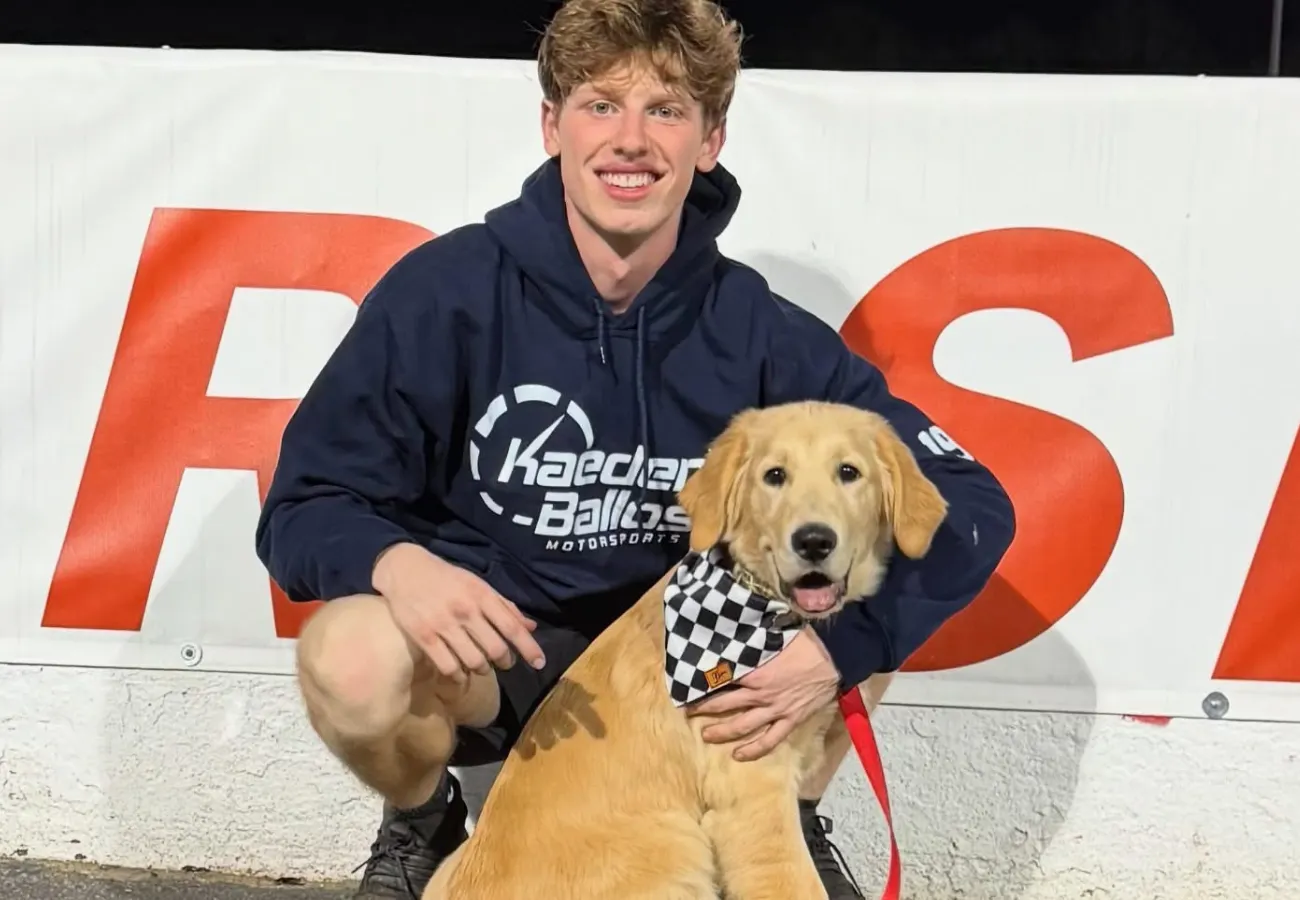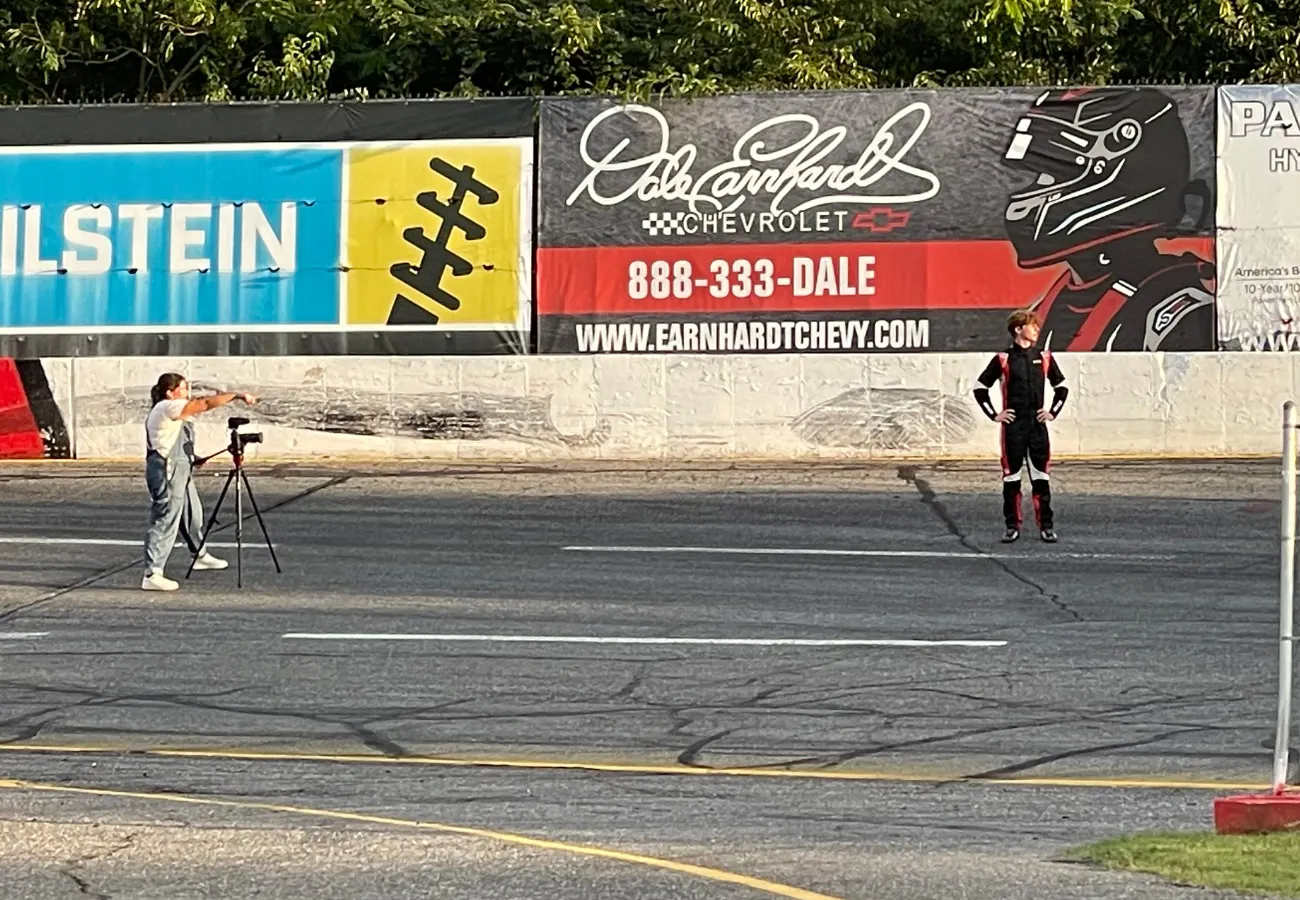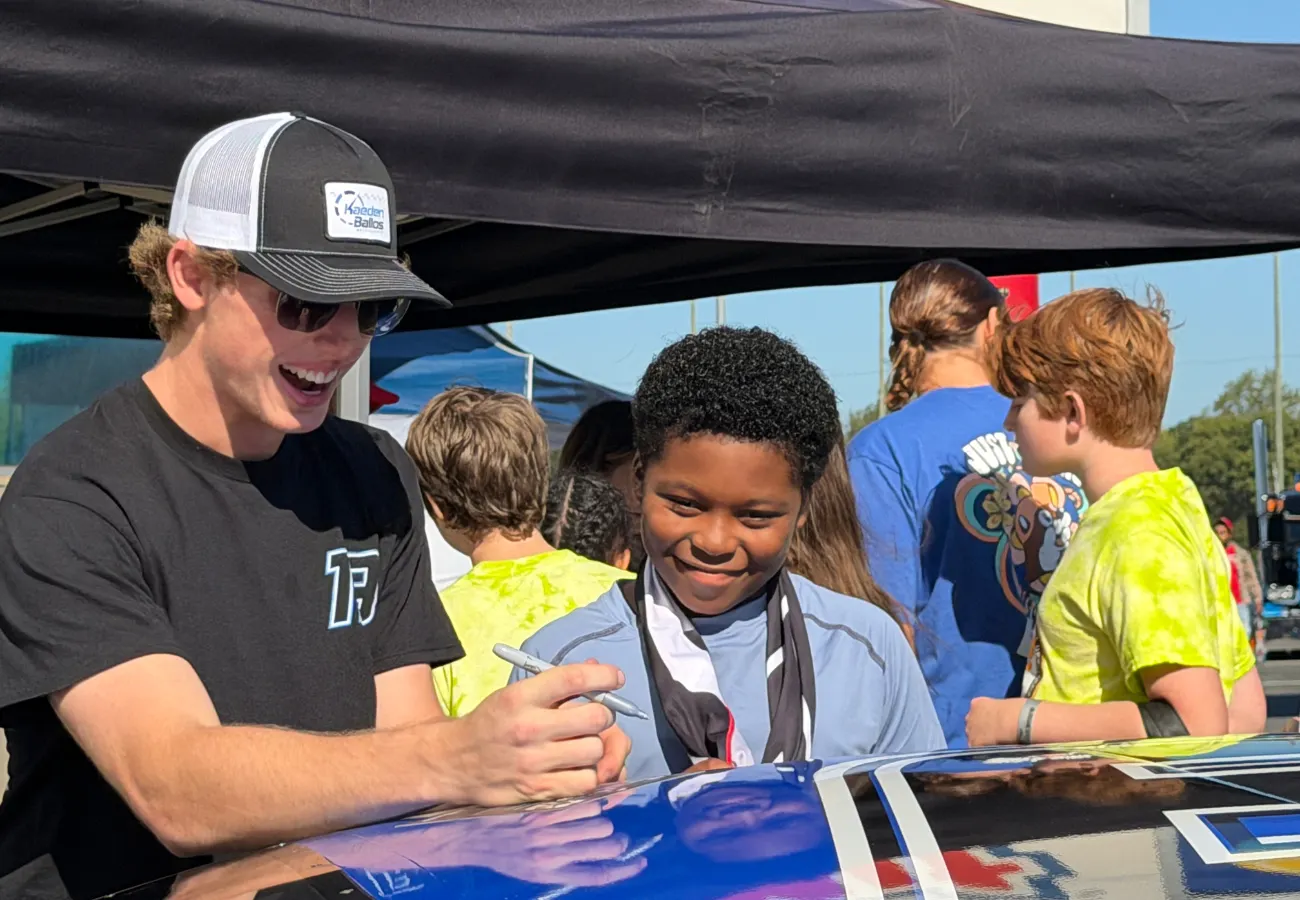People see the car and the helmet and think racing is only about race day. It isn’t. My day is built so I can show up ready—mind, body, and car. Here’s what a usual summer day looks like for me and how it helps me get better behind the wheel.
Morning: Start Clean and Focused
I wake up at 7:00 a.m. The first thing I do is take care of the dogs. It sounds small, but it gets me moving and teaches me to handle responsibilities right away.
After that, I day trade for a bit. It forces me to focus, manage risk, and make decisions quickly. Those are the same skills I need in the car.
Before I eat, I take my Balance of Nature supplements. Then I make a clean, high-protein breakfast using whole foods. I avoid junk and chemicals. If I put good fuel in my body, I can push harder later without crashing.
Mid-Morning: Reps Without Track Time
I fire up iRacing. Sim time helps with lines, braking points, and race craft without burning tires or fuel. I pick tracks and cars that match what I’m racing in real life. I run focused sessions and write down one thing I want to improve the next time I drive.
A few days a week—two to four times—I go to Jiu-Jitsu. It builds strength, flexibility, and discipline. On the mat you learn to breathe when your heart is pounding and stay calm when things get tough. That carries straight over to racing.
Lunch and Reset
For lunch I like Clean Juice. It keeps me light and gives me energy without the heavy, sleepy feeling. If I eat clean, the afternoon work is better and I recover faster.
Afternoon: PitFit + Recovery
Most afternoons I train at PitFit. This is where a lot of my gains happen. We don’t just lift weights. We train my eyes, brain, and body to work together under stress.
Cognitive work
- Eye-hand coordination drills
- Dynavision D2 board for peripheral vision, timing, and accuracy
- Stroop effect training (I hold the gym record and rank near the top worldwide)
- Recognition speed and decision-making tests
- NeuroTracker virtual reality sessions
- Memory, focus, and pattern recall
Endurance
- Heat acclimation workouts
- Circuits and extended time trials
- Strength for the neck, core, arms, and legs
Agility
- Cone drills and quick footwork
- Reactive light drills that force instant decisions
- Balance-integrated movements
- Change-of-direction exercises to build muscle memory
- Plyometrics for explosive moves
Cardio machines
- Air bike
- Treadmill riser
- SkiErg for arms, core, and lungs
- Rowing intervals
After PitFit, I hit the sauna and then a cold plunge. The sauna relaxes my muscles. The cold plunge resets my body and reduces soreness so I can train hard again the next day.
Some Days: Shop, Sports, or Stretch
Not every day is the same. Some afternoons I go to the shop to clean, maintain the race car, or repair damage from the last race. Keeping the car right is part of being a driver.
Other days I play golf or basketball to stay active and competitive. I also visit Stretch Zone. Extra flexibility helps posture in the seat, reduces stress, and lets me handle long stints without cramping.
Evening: Simple, Steady Habits
At night I eat a high-protein dinner, run another iRacing session to work on one small goal, and walk the dogs. That walk helps me breathe, cool down, and switch my brain out of race mode.
My wind-down routine starts early so I’m asleep around 9:00 p.m.
- I turn off all screens 1–2 hours before bed.
- I set up my humidifier, air purifier, and essential oil diffuser.
- I put on meditation music and keep the room dark and cool.
Good sleep is the best performance tool I have. If I sleep well, I think faster and make better choices in the car.
How I Prepare for a Race
Race prep starts the night before and continues all the way to the grid. I keep it simple and repeatable.
Night Before
- Sauna session to relax and detox.
- Watch footage of past races and study the track I’m about to run.
- Do iRacing on that same track to refresh visual marks.
- Eat a clean, balanced meal—nothing heavy.
- Set my room for deep sleep so I wake up ready.
Race Morning
- Cold plunge to wake up my whole body.
- Take Balance of Nature.
- Grounding: I stand barefoot on the earth for a few minutes to calm my mind and center my focus.
- Start hydrating with electrolytes.
At the Track
- Help unload and set up. I want hands on the car so I understand everything that’s happening.
- Walk the track to look for lines, grip, and visual landmarks.
- Meet with the crew chief, team, and spotter to lock in the plan and schedule.
- Review GoPro video from earlier sessions so I remember what worked.
- Take 10–15 quiet minutes before qualifying to lock in mentally. That silence helps me hit my marks when it counts.
After Each On-Track Session
- Debrief with the team on car feel and balance.
- Make adjustments based on feedback from my dad, the crew, and the spotter.
- Rewatch the latest GoPro clips to find one or two spots where I can be smoother or faster next run.
I don’t try to fix ten things at once. I pick the biggest item, fix it, and go test again. That’s how you actually improve.
Why This Routine Works
My day looks simple on purpose. I repeat habits that support racing:
- Clean fuel (food) → steady energy
- Sim time → more reps without track wear
- Jiu-Jitsu and PitFit → stronger body and sharper brain
- Infrared Sauna and Red Light Therapy → done at Beem Light Sauna several times a week
- Cold plunge → better recovery
- Shop time → deeper feel for the car
- Sleep → faster reactions and better choices
When I stack these small wins every day, race day feels normal. I’m ready to learn, ready to adapt, and ready to push.
If you’re a young driver trying to get better, copy the parts that fit your life. Keep your days simple. Do the basics well. Take care of your body. Log your work. Then show up at the track calm and prepared. That’s how you build speed that lasts.




